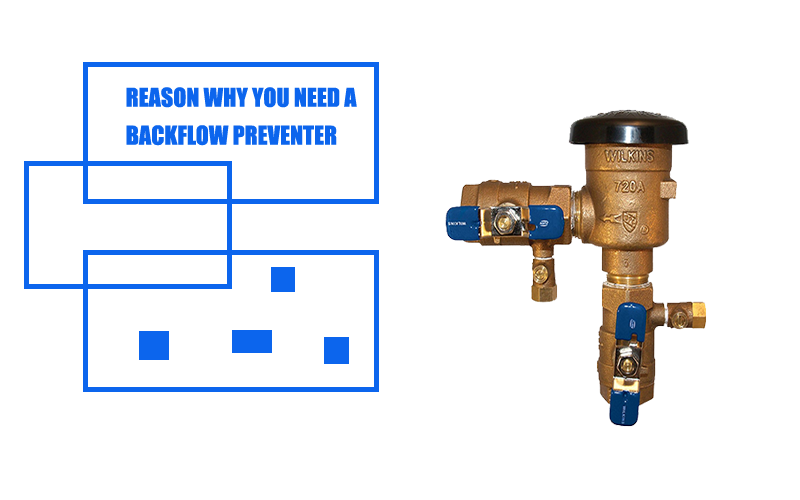FAQ
Frequently Asked Questions
As a customer, you may have some questions about what a backflow preventer is and what it does. A backflow preventer is a device that helps to prevent contamination of potable water supplies by preventing backflow. This page will explain the basics of backflow prevention and our services and answer some frequently asked questions some customers have.
WHY DO I NEED A BACKFLOW PREVENTER?
01.
If you’re like most people, you may not know what a backflow preventer is or why you need one. A backflow preventer is a device that helps keep contaminated water from flowing back into your drinking water supply. Without a backflow preventer, dirty water could flow from your irrigation system or other sources right into your faucet, causing all sorts of problems. The main reasons why you need a backflow preventer installed on your home and business:
1) To protect users – Contaminated water can contain all sorts of harmful bacteria and parasites that can make you sick. A backflow preventer will help keep these contaminants out of your drinking water.
2) To comply with federal, state, and local regulations.

How To Decide If You Should Repair Or Replace Your Backflow Preventer
02.
If you’re like most homeowners, you probably don’t think about your backflow preventer until it’s not working properly. And when that happens, you have to make a decision: should you repair or replace your backflow preventer? Here are some things to consider as you make your decision.

BACKFLOW PREVENTER: INSTALLING, TESTING, AND REBUILDING COSTS
03.
Installing, testing, and rebuilding a backflow preventer can be costly. However, it is a necessary investment to protect your home and business from potentially harmful water contamination. This guide will outline the costs involved in each of these steps, as well as some tips for reducing those costs. By following these guidelines, you can rest assured that your backflow preventer is installed and functioning properly.

Backflow Preventer - What Is It And How Does It Work?
04.
What is a backflow preventer and how does it work? A backflow preventer is a device used to stop the reverse flow of water or other fluid substances into the public water supply. The device works by using a check valve that closes when there is a sudden decrease in pressure on the upstream side, which would allow contaminated water from entering the public water system. Many communities and businesses require backflow prevention devices to be installed on their property due to potential health risks. If you are unsure if your community requires them, be sure to contact your local officials.

How Can I Tell if My Home Or Business Has a Backflow Device
05.
If you are a homeowner or business owner, it is important to know whether or not you have a backflow device installed. Backflow devices are essential pieces of equipment that help protect your home or business from harmful contaminants. So, how can you tell if you have one? This blog post will explain how to tell if your home or business has a backflow device, and what to do if you don’t. Stay safe and protect your property with this important information!

TYPES OF BACKFLOW PREVENTER VALVES AND SIGNS OF A NEEDED REPAIR
06.
There are many types of backflow preventer valves on the market, and each has its own unique benefits and drawbacks. It’s essential to be aware of the different types available, as well as the signs that a repair is needed, so that you can make the best decision for your home or business.
What is a Backflow?
A backflow is a flow of water or other fluid substance in the opposite direction of the normal flow. This term is most commonly used in relation to plumbing and water systems, where it refers to water or wastewater flowing back into the system from somewhere outside of it.
Backflows can be caused by several factors, including broken pipes, improper installation, or even changes in elevation between different parts of the plumbing system. They can also be caused by foreign objects or materials getting caught in the flow and causing it to reverse direction.

How Often Should A Backflow Preventer Be Tested in New Jersey
07.
Backflow preventers are an essential part of keeping the water system safe. They are used to prevent contaminated water from entering the water system. Backflow preventers must be tested regularly to ensure that they are working correctly.
What is a Backflow, and How Does it Work?
A backflow is a flow of water or other fluid substances opposite the intended flow. It occurs when the pressure of the fluid in one pipe or vessel becomes more significant than the pressure of fluid in another pipe or vessel, causing a reversal of the normal flow.
There are many potential causes of backflows, but some common ones include defective valves, improper installation, and blockages in the pipes. Backflows can be dangerous because they can contaminate drinking water supplies with hazardous substances such as chemicals and sewage. They can also cause damage to property and equipment.


